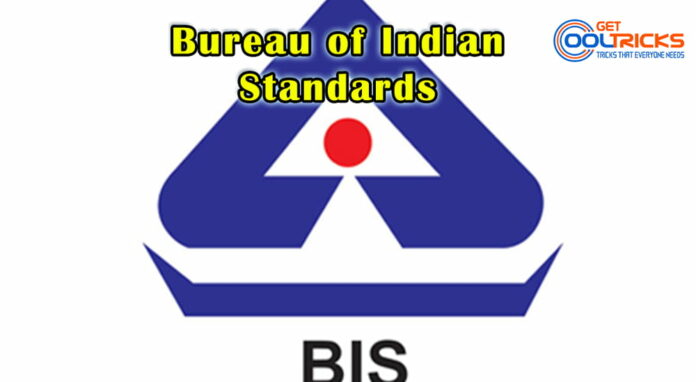The Indian government has recently launched the new BIS-Care app, which allows people to check the ISI and trademarks of any product.BIS is India’s National Standard Body for the total development of standardisation, certification, and quality assurance of goods.
BIS-Care app
The new BIS-Care app will allow consumers to examine and learn about the quality of ISI and hallmark quality-certified products.
This will allow people to be informed of the authenticity of products and even raise complaints about non-authentic products.
For convenience, the app is accessible in both Hindi and English. Users can use the app to view the entire Complaint Management System and execute the same operations as the BIS website.
Bureau of Indian Standards (BIS)
- BIS is established under BIS Act, 1986 and declared National Standard Body of India by BIS Act 2016.
- It is mandated for harmonious development of activities of standardization, marking and quality certification of goods and for matters connected.
- It is headquartered at New Delhi.
- It was established by the Bureau of Indian Standards Act, 1986 which came into effect in December 1986.
- It works under the aegis of the Ministry of Consumer Affairs, Food & Public Distribution.
The main purposes are
- Supplying things that are safe, dependable, and of high quality;
- Encouraging exports and import substitution;
- Control over variety proliferation through standardisation, certification, and testing.
- Minimising consumer health risks;
Bureau of Indian Standards Act
- The BIS Act allows for a variety of conformity assessment procedures, including self-declaration.
- The BIS Act includes rules that make mandatory the hallmarking of precious metal items.
- In addition to the BIS, the Act allows the Central Government to select any authority/agency to verify the conformance of products and services with set standards and issue certificates of conformity.
- There is a provision for the repair or recall of products that do not meet the applicable Indian Standard.
The Main Activities of BIS
- Activities include standardisation, certification, hallmarking, and product testing in laboratories.
- BIS collects market samples for independent testing in order to ensure the quality of ISI-marked products on the market.
- Action is taken against violating firms whose products do not meet Indian standards.
- BIS organises Consumer Awareness Programs to educate consumers about the quality of ISI-marked items, as well as their misuse and colourable imitations.
Penalties Established by the Act
- The penalty for using the Indian standard mark incorrectly is a fine of up to Rs. 5 lakh.
- The Act also establishes penalties for the following violations: improper use of the standard mark by testing and marking centres.
The BIS (Hallmarking) Regulations, 2018, require the hallmarking of precious metals jewellery and artefacts such as gold and silver.
Hallmarking
The government has made the insertion of a Hallmark Unique Identification (HUID) number in every piece of jewellery obligatory.
HUID, implemented by the Bureau of Indian Standards, is a six-digit alphanumeric code consisting of numbers and letters. It is provided to each item of jewellery during the hallmarking process and is unique to each piece.
For 14, 18, and 22-carat gold jewellery and artefacts, hallmarking and HUID are required.
Before purchasing any gold jewellery, the buyer should examine all three symbols.
HUID Symbol Implementation
The hallmark consists of three symbols that provide information about the jewellery piece.
The first is the BIS logo, the second represents purity and fineness, and the third is the HUID.
Jewellery is professionally stamped with the unique identification number at the Assaying & Hallmarking centre.
Benefits of Hallmarking
- As gold is vital in Indians’ lifestyle, enforcing gold hallmarking is intended to protect consumer interests.
- It provides clients with “third-party assurance” on the quality of gold jewellery.
In exploring more about different certification marks by BIS, one should also be familiar with Ecomarks.
Eco mark
Eco mark is a certification mark granted by the Bureau of Indian Standards (BIS) for environmentally friendly items that meet the BIS’s standards.
The scheme was initially implemented in 1991 by a resolution. The Ministry of Environment and Forests issues it.
Eco-Marks aid in the identification of environmentally friendly products on the market. The mark is issued in approximately 16 categories, including food, medications, chemicals, electrical goods, paper, lubricating oils, packing materials, etc.
Goals of Eco Mark
- It helps consumers to take environment-friendly decisions while purchasing a product.
- To encourage citizens to use ecologically friendly items.
- Helps to increase the quality of the environment and encourages sustainable development.
- To provide an incentive for producers and importers to lessen the harmful environmental impact of their products.
- To recognise and reward companies that take positive steps to decrease the negative environmental impact of their products.
Criteria for Eco Mark
The products offered for certification will be evaluated for the following major environmental impacts:
- In terms of usability, processing, and disposal, they have far less pollution potential than comparable products.
- They are recycled, and recyclable.
- They make a significant contribution to the preservation of non-renewable resources.
- The manufacturing process, including the raw material source, is considered.
- The environmental impact made by the product.
- Energy conservation during the manufacturing process.
- The consequence and scope of waste generated during the manufacturing process.
- Disposal of product and product container.
- Utilization of discarded and recyclable materials.
- Sustainability of the product.
- Biocompatibility of the product.


